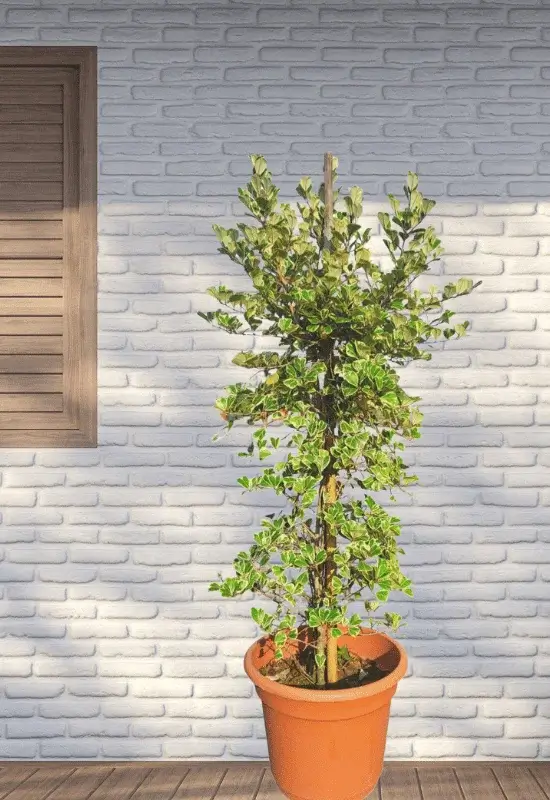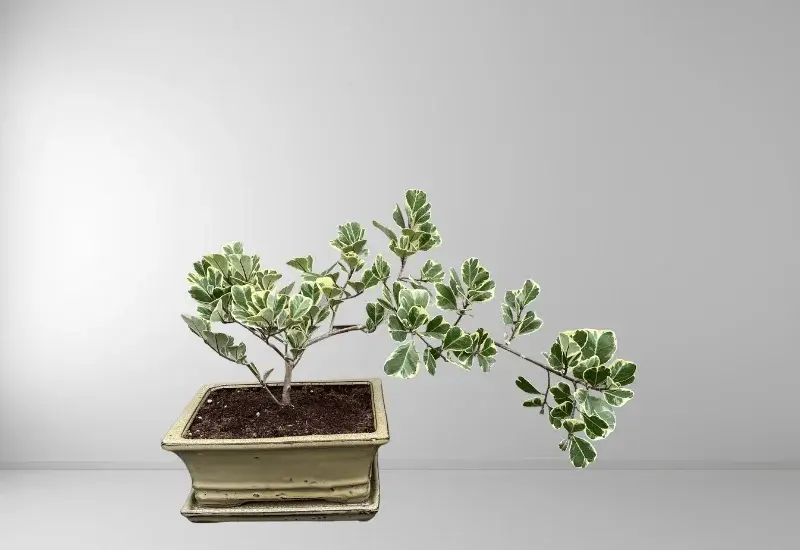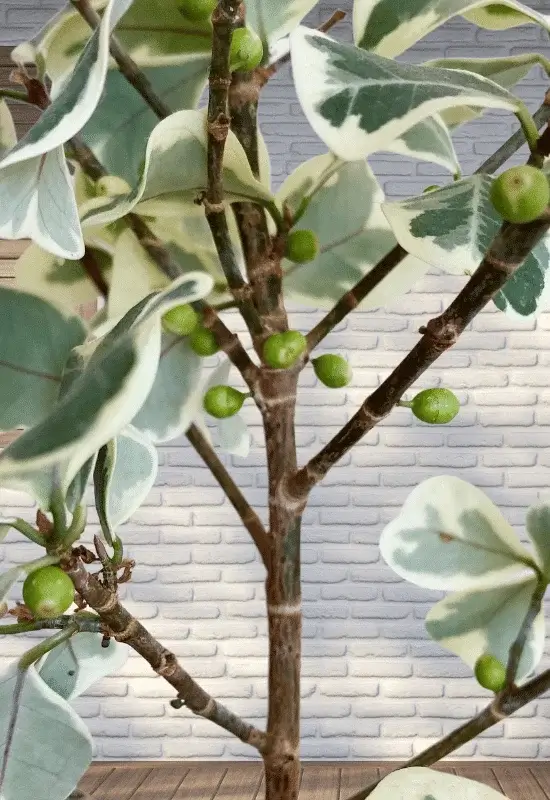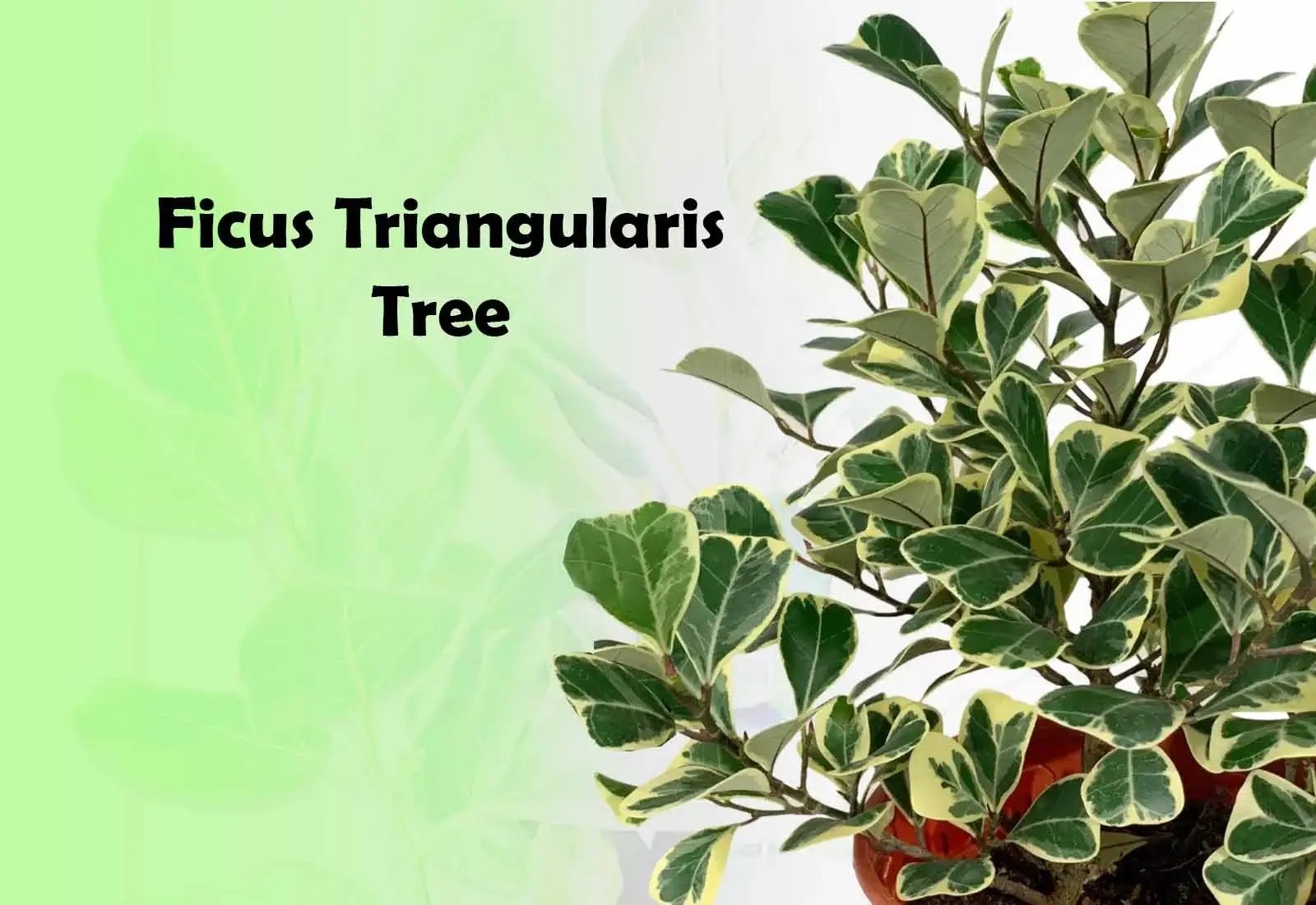Unique Features of Ficus Triangularis Tree and Ficus Triangularis Bonsai Tree
The Ficus Triangularis tree, commonly known as the Triangle Fig, is a fascinating plant that has captured the hearts of plant enthusiasts worldwide. This unique species belongs to the Ficus family and is renowned for its distinctively triangular leaves, which set it apart from other Ficus varieties.
Ficus Triangularis as a Tree

Ficus Triangularis, when grown as a tree, displays several noteworthy characteristics that make it a standout addition to any garden or landscape. As a tree, it typically features a sturdy trunk with an elegant canopy of dark green, glossy leaves. These leaves are the highlight of the plant, given their striking triangular shape, which tapers to a point.
They create a charming play of shadows and add a touch of sophistication to your surroundings. The overall appearance of a mature Ficus Triangularis tree exudes an air of natural grace and beauty.
Care and Maintenance for Ficus Triangularis Tree

Caring for a Ficus Triangularis when grown as a tree requires attention to several key factors to ensure its health and longevity. Here are essential care and maintenance guidelines:
| Aspect | Care Guidelines for Ficus Triangularis as a Tree |
| Light Requirements | Bright, indirect sunlight; avoid harsh direct sun |
| Watering | Allow the top inch of soil to dry; water thoroughly |
| Humidity | Maintain higher humidity levels |
| Temperature | Keep between 65-75°F (18-24°C) |
| Pruning | Regular pruning for shape and size; improve air circulation |
| Fertilization | Balanced, water-soluble fertilizer in the growing season |
| Repotting | Every 2-3 years in spring; proper drainage, slightly larger pot |
| Pest Management | Watch for pests, use insecticidal soap, isolate affected plants |
Ficus Triangularis Bonsai

Ficus Triangularis Bonsai is a captivating art form that allows you to transform this unique plant into a miniature masterpiece. Creating a Ficus Triangularis Bonsai involves shaping and pruning it into a small, aesthetically pleasing tree while maintaining its distinctive triangular leaves.
Care and Maintenance for Ficus Triangularis Bonsai
| Aspect | Ficus Triangularis Bonsai Care Guidelines |
| Light | Bright, indirect sunlight near a window with filtered light |
| Watering | Maintain a consistent routine; allow partial soil drying |
| Humidity | Benefit from higher humidity; mist, use a humidity tray, or use a humidifier |
| Temperature | Keep within 65-75°F (18-24°C); avoid sudden temperature fluctuations |
| Pruning | Regular pruning to maintain shape and size; use sharp shears |
| Wiring | Use soft wire for shaping; be gentle to avoid damage |
Tips for Creating and Styling a Ficus Triangularis Bonsai
Creating a Ficus Triangularis Bonsai requires creativity and patience. Here are some valuable tips to help you in the process:
- Start with a young Ficus Triangularis plant or sapling with a sturdy trunk and healthy growth.
- Choose a suitable bonsai pot or container that complements the tree’s size and style.
- Be mindful of the bonsai’s overall design, including branch placement, foliage density, and trunk shape.
- Regularly inspect the tree for signs of disease or pests and take prompt action if any issues arise.
With dedication and attention to detail, you can create a stunning Ficus Triangularis Bonsai that captures the elegance and uniqueness of this remarkable plant in miniature form.
Ficus Triangularis: Origin and Natural Habitat
Native to South Africa, the Ficus Triangularis thrives in tropical and subtropical climates. In its natural habitat, this tree can grow up to 30 feet tall. However, when cultivated as an indoor plant, it typically remains much smaller, making it an ideal choice for home and office environments.
Ficus Triangularis Tree Fruiting

Ficus Triangularis, when mature and well-cared for, can bear fruit. While not as prolific in fruit production as other Ficus species, Ficus Triangularis fruiting behavior can be rewarding.
Conditions for Fruiting in Ficus Triangularis
Fruiting in Ficus Triangularis tree is influenced by specific environmental conditions and care practices. To encourage fruiting, consider the following factors:
Maturity: Ficus Triangularis tree typically requires several years of growth to reach maturity and bear fruit. Younger plants may not produce fruit.
Light: Adequate sunlight is crucial for fruiting. Ensure your plant receives bright, indirect sunlight, stimulating flowering and fruit development.
Pollination: Ficus Triangularis relies on a specific pollinator, usually a tiny wasp, for successful fruit production. In indoor settings, natural pollination may not occur, limiting fruit formation.
Harvesting and Using Ficus Triangularis Fruits
If your Ficus Triangularis tree does produce fruits, here’s how to harvest and use them:
Harvesting: Fruits will ripen and turn purplish when ready for harvest. Gently pluck the ripe fruits from the tree.
Edibility: The fruits of Ficus Triangularis are generally safe to eat in moderation. They have a sweet, fig-like flavor. However, some people may experience mild irritation from the latex produced by the plant, so it’s best to sample a small amount first.
Culinary Use: You can enjoy Ficus Triangularis fruits fresh, in salads, or as a unique addition to various dishes. They can also be dried for a longer shelf life.
Ficus Triangularis tree Overview
1. Ficus Triangularis Overview
Ficus Triangularis is a member of the Ficus family known for its striking triangular leaves. It’s a versatile choice for both indoor and outdoor decoration.
2. Ficus Triangularis as a Tree
When grown as a tree, it boasts an elegant appearance with its dark green, glossy leaves and sturdy trunk. Proper care includes providing the right light, humidity, and pruning to maintain its shape.
3. Ficus Triangularis Bonsai
Creating a Ficus Triangularis Bonsai involves shaping and pruning it into a miniature masterpiece. Care includes appropriate lighting, humidity, and regular pruning to achieve the desired aesthetic.
4. Ficus Triangularis Fruiting
While less common, Ficus Triangularis can bear fruit under specific conditions. Consider factors like maturity, adequate sunlight, and pollination to encourage fruiting. Harvested fruits can be enjoyed fresh or incorporated into various dishes.
Conclusion: Why Choose Ficus Triangularis
The Ficus Triangularis is more than just a houseplant; it’s a living piece of art. Its distinctive triangular leaves, manageable size, and relatively easy care requirements make it an excellent choice for both novice and experienced plant owners. By incorporating a Ficus Triangularis into your space, you’re not only adding a touch of natural beauty but also bringing a piece of South African flora into your home.
Whether you’re looking to expand your plant collection or searching for a unique centerpiece for your living room, the Ficus Triangularis is sure to impress. With proper care and attention, this remarkable tree will thrive, bringing years of enjoyment and a touch of the exotic to your indoor environment.



